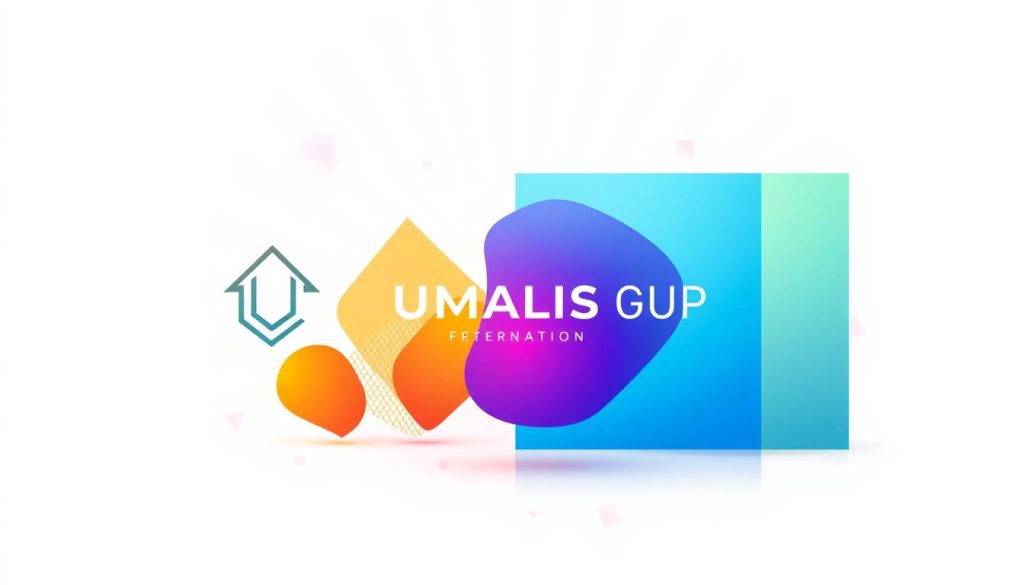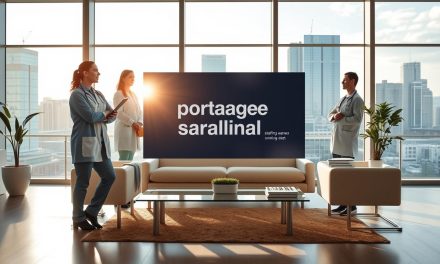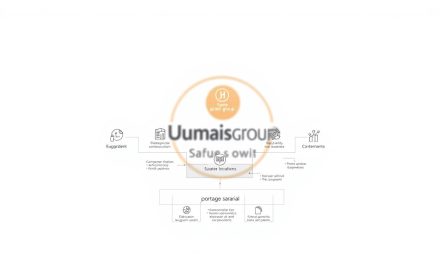Over 70% of brands now prioritize visual content creation as their primary marketing strategy, yet fewer than 35% of creative professionals feel equipped to thrive independently. This gap reveals a critical opportunity for those ready to transform artistic talent into a resilient career path.
Visual communication sits at the heart of modern business success. Professionals in this field translate complex ideas into compelling imagery that drives engagement across digital platforms and traditional media. The shift toward independent work models offers unparalleled creative control, but requires strategic planning to ensure stability.
Building sustainable success means mastering two equally vital components: artistic excellence and business fundamentals. Our approach helps you develop client management skills while refining your unique visual style. Every project becomes a stepping stone toward establishing your market value and professional reputation.
For those seeking to secure your career in this dynamic field, we provide structured support for both creative development and operational logistics. Learn to balance artistic integrity with commercial viability through proven frameworks adapted to France’s unique market demands.
Table of Contents
Key Takeaways
- Visual communication skills directly impact brand success in digital markets
- Independent careers require balanced development of artistic and business capabilities
- Strategic client relationships fuel long-term professional stability
- Portfolio diversity demonstrates adaptability across media formats
- Market-specific knowledge enhances competitiveness in France’s creative sector
Understanding the Freelance Graphic Design Landscape
Modern businesses need visual storytellers who translate ideas into tangible results. 83% of consumers remember information better when paired with relevant imagery, creating demand for specialists who master both aesthetics and strategy.
Visual Language as Strategic Tool
Every color choice and typography decision carries meaning. Professionals decode client objectives into visual systems that resonate with specific audiences. Whether creating logos or packaging, your work becomes the silent ambassador of brand values.
Consider these essential elements when shaping a company’s image:
- Cultural context of symbols and color psychology
- Technical constraints across print/digital formats
- Consistency in multi-platform applications
Expanding Your Creative Toolkit
The field rewards those who diversify their capabilities. Today’s projects might require:
- Brand identity systems with motion elements
- Interactive website components
- Data-driven infographics
By mastering complementary skills like illustration or 3D modeling, you position yourself as a solution provider rather than a task executor. This adaptability proves particularly valuable in France’s competitive market, where clients seek comprehensive creative partners.
Key Strategies for Freelance Graphic Design Success

Standing out in today’s creative economy requires more than technical skills—it demands intentional self-definition. Your artistic perspective becomes your professional fingerprint when strategically developed and consistently applied.
Carving Out Your Unique Visual Identity
The best way to attract ideal clients starts with clarity about what makes your work distinct. We help transform your creative instincts into a recognizable style that communicates expertise before you pitch services.
Consider these vital components:
- Color palettes reflecting your artistic philosophy
- Typography choices demonstrating technical mastery
- Layout patterns establishing visual rhythm
One client transformed their practice by implementing what they called « branded creativity »—a system where every project proposal, deliverable, and follow-up communication reinforced their signature aesthetic. « Our conversion rates tripled when clients started recognizing our work before seeing the logo, » they reported.
Your visual identity should function as a silent ambassador across all platforms. From social media graphics to invoice templates, consistency builds recognition. We guide you in developing assets that:
- Showcase specialized skills through curated portfolio pieces
- Align with market needs in France’s design sector
- Communicate professional values through intentional details
This strategic approach turns temporary projects into long-term partnerships. Clients remember cohesive experiences, not isolated designs. By embedding your identity into every interaction, you create memorable connections that fuel business growth.
Building a Solid Business and Legal Foundation
Establishing your creative practice requires more than talent—it demands airtight legal protection. France’s artist-author status offers unique advantages, automatically safeguarding your original creations under intellectual property law. This framework ensures you retain ownership while granting clients specific usage rights through structured agreements.
Copyrights, Intellectual Property, and Assignment Rights
Your logo concepts and visual systems gain immediate protection upon creation. We help draft contracts specifying exact usage terms—from digital formats to regional distribution limits. One client secured 12% residual income by licensing their packaging design for limited-term retail use.
Key considerations include:
- Automatic copyright under French law (Article L111-1 CPI)
- Mandatory assignment clauses defining client privileges
- Revenue models combining upfront fees with licensing options
Registering Your Venture in France
Navigate business registration through the official company portal. Create your account, select « Design Activities » (APE 7410Z), and await your Siret number. « Issuing invoices without proper registration risks €1,500 fines, » notes a recent Ministry of Culture advisory.
Our step-by-step guidance ensures:
- Correct social security affiliation for artist-authors
- Compliance with VAT thresholds and tax obligations
- Professional credibility through valid Siren/Siret identification
Mastering Essential Tools and Techniques in Graphic Design

Modern visual professionals require technical mastery as much as creative vision. Industry-standard software forms the backbone of impactful work, while strategic portfolio presentation determines client acquisition success.
Strategic Software Mastery
Adobe Creative Cloud and Figma dominate 89% of professional workflows. Our training approach focuses on practical application:
| Tool | Core Use | Market Demand |
|---|---|---|
| Illustrator | Vector graphics | 87% of job postings |
| Photoshop | Image editing | 92% client requests |
| Figma | UI/UX design | 64% growth since 2022 |
Focus on cross-software workflows that accelerate project delivery. Learn to transfer assets between programs while maintaining quality across print and digital formats.
Portfolio That Converts
Your work collection should tell a strategic story. One client increased inquiries by 140% after restructuring their presentation:
« Showing our process from sketch to final product made clients understand our value instantly. »
Effective portfolios include:
- Case studies with measurable results
- Diverse samples (product packaging, website layouts)
- Before/after comparisons for complex projects
Update your showcase quarterly, replacing older pieces with recent work that reflects current market trends. This living document becomes your most powerful business development tool.
Optimizing Your Online Presence and SEO for Freelance Services
Your digital footprint acts as a 24/7 storefront in today’s competitive market. A well-structured website ranks higher in search results while showcasing your creative capabilities. We help transform your online presence into a lead-generation machine through strategic optimization.
Technical excellence forms the foundation of discoverability. Slow-loading pages drive away 53% of mobile visitors within three seconds. Prioritize these core web vitals:
| Factor | Impact on Visibility | Optimization Tip |
|---|---|---|
| Page Speed | 40% ranking influence | Compress images below 200KB |
| Mobile Design | Essential for local searches | Use responsive templates |
| Keyword Integration | 35% traffic boost | Include location-based terms |
Curate content that reflects your artistic approach while meeting SEO requirements. Case studies with before/after examples perform 68% better in engagement metrics. Feature press mentions and client testimonials to build credibility.
Maintain consistent branding across social platforms using your signature color palette. Update profiles weekly with project snippets or design tips. « Our inquiry rate doubled when we started sharing client collaboration stories, » notes a Paris-based creative director.
Regularly audit your web properties using tools like Google Search Console. Track keyword positions for terms like « website design specialist » or « brand identity expert. » Adjust content quarterly to align with algorithm updates and market trends.
Developing a Client Acquisition and Project Management Strategy
Building lasting professional relationships begins with intentional outreach and structured execution. Successful practitioners blend proven methods with modern tactics to create consistent project pipelines. We help establish systematic processes that convert initial contacts into recurring business opportunities.
Effective client acquisition combines personal networking with digital visibility. Attend industry events in Paris and Lyon while maintaining active profiles on platforms like LinkedIn and Behance. One creative director increased inquiries by 75% after aligning their online portfolio with targeted local search terms.
Streamlined project management ensures deadlines and quality standards are met without burnout. Implement tools like Trello or Asana to track milestones, revisions, and deliverables. A Marseille-based artist reduced project delays by 40% using automated progress updates.
Direct outreach remains a powerful tool when executed strategically. Craft personalized emails that:
- Highlight specific client needs
- Showcase relevant past work
- Propose actionable solutions
Word-of-mouth referrals thrive when you exceed expectations consistently. Encourage satisfied clients to share their experiences through testimonials or case studies. « Our repeat business tripled after implementing a structured feedback system, » notes a branding specialist from Toulouse.
Establish clear workflows that protect your creative process while meeting business objectives. Define communication protocols, revision limits, and payment terms upfront. This approach builds trust and minimizes misunderstandings during complex projects.
Qualify opportunities carefully using our client assessment framework. Prioritize partnerships that align with your expertise and long-term goals. By focusing on compatible projects, you’ll enhance job satisfaction while strengthening your market position.
Pricing Your Freelance Graphic Design Services Effectively
Balancing artistic value with fair compensation forms the cornerstone of sustainable practice. We guide professionals in developing pricing models that reflect expertise while remaining accessible to target clients. Market research shows Paris-based creatives charge 15-30% more for specialized skills like brand identity systems.
Smart Pricing Structures That Work
Value-based models outperform hourly rates in 68% of client negotiations. Consider these factors when setting fees:
Project scope complexity directly impacts timelines. A detailed discovery phase helps estimate effort accurately. Logo development might require 3x more revisions than standard marketing assets.
Local market benchmarks prove essential. Analyze competitor rates in your region through professional networks. Many specialists combine fixed fees for defined deliverables with flexible add-ons.
Our approach emphasizes transparency through itemized proposals. Clients appreciate seeing how costs break down into research, concept development, and revisions. This builds trust while justifying premium pricing for technical expertise.
FAQ
How do I protect my creative work legally?
Secure your intellectual property through copyright registration and clear contractual terms. In France, consider depositing original concepts with legal timestamping services like Copyright.eu. Always specify usage rights in client agreements to maintain ownership control.
What software is essential for modern visual projects?
Adobe Creative Cloud (Photoshop, Illustrator, InDesign) and Figma form the industry-standard toolkit. For motion projects, add After Effects. Emerging fields like product design often require 3D tools like Blender or Cinema 4D alongside prototyping platforms.
How can I improve my portfolio’s online visibility?
Optimize website content with strategic keywords like « brand identity specialist » or « packaging design expert. » Use alt-text for images and maintain a blog with case studies. Integrate social media platforms like Behance or Dribbble with SEO-friendly descriptions of your work process.
What factors determine pricing for creative services?
Consider project complexity (logo vs. full rebranding), licensing scope, and market rates. Packaging design typically commands higher fees than basic social media graphics. Many professionals combine hourly rates (€45-€120) with value-based pricing for strategic deliverables.
How do I balance multiple design specializations?
Create service packages that combine complementary skills – pair web design with motion graphics for digital campaigns. Use client questionnaires to identify core needs, then propose tailored solutions that showcase your multidisciplinary approach without overextending capacity.
What makes a brand identity stand out in competitive markets?
Successful visual systems combine memorable logos with consistent typography and color psychology. Analyze competitors’ branding gaps – perhaps they lack dynamic elements like animated logos or cohesive packaging design. Position your work as solving specific business challenges through strategic aesthetics.
How often should I update my professional portfolio?
Refresh content quarterly with recent projects and trim older work that no longer reflects your best quality. For web design specialists, update live project links to ensure functionality. Include metrics when possible – e.g., « Packaging redesign increased client sales by 22%. »





